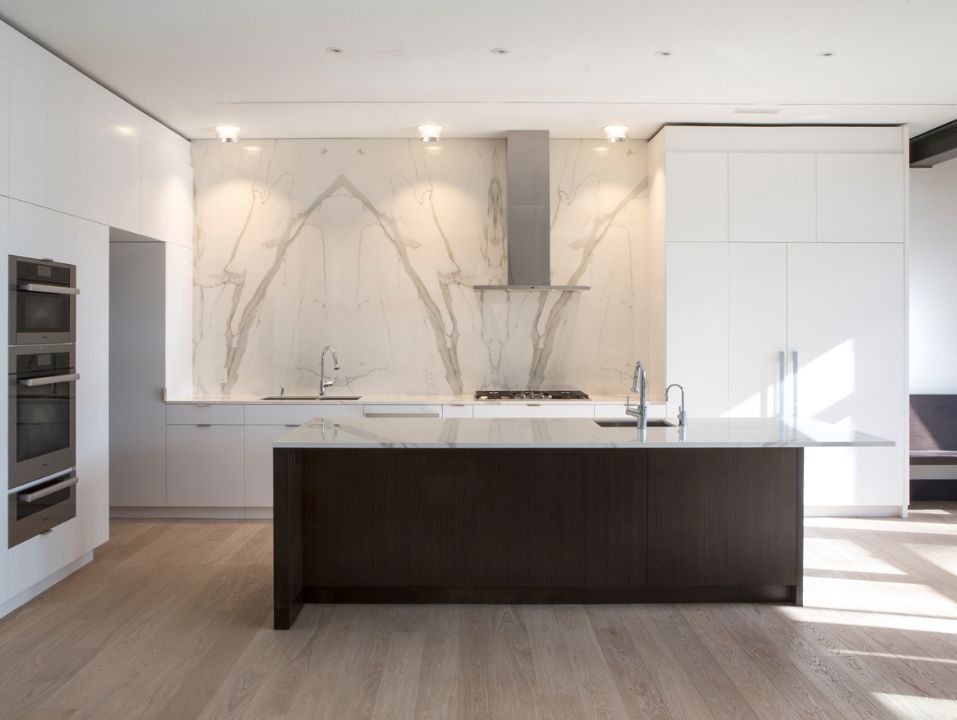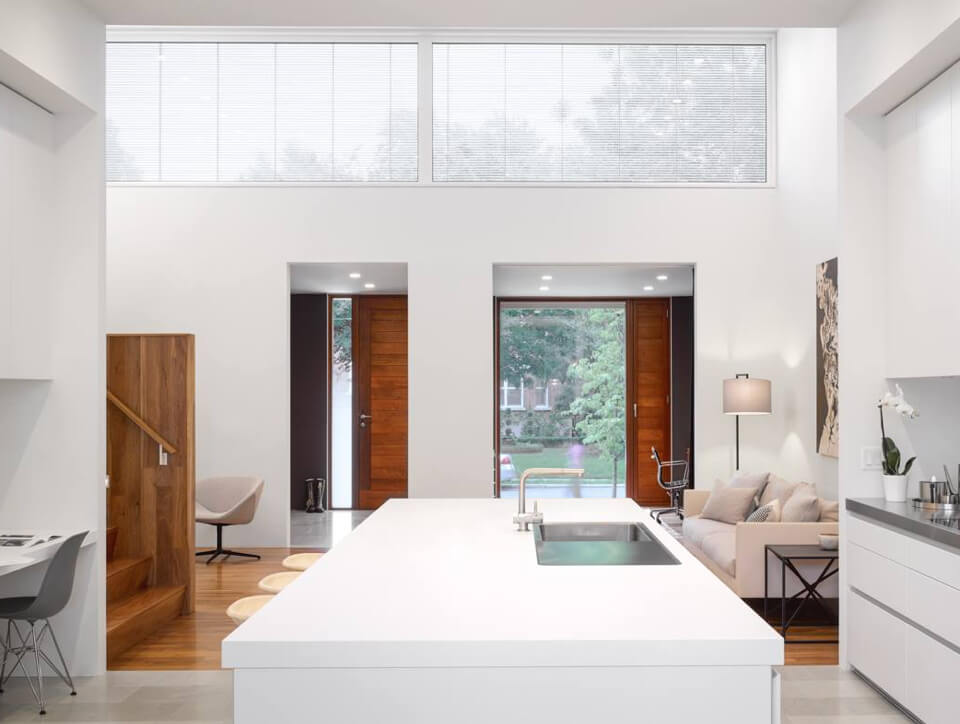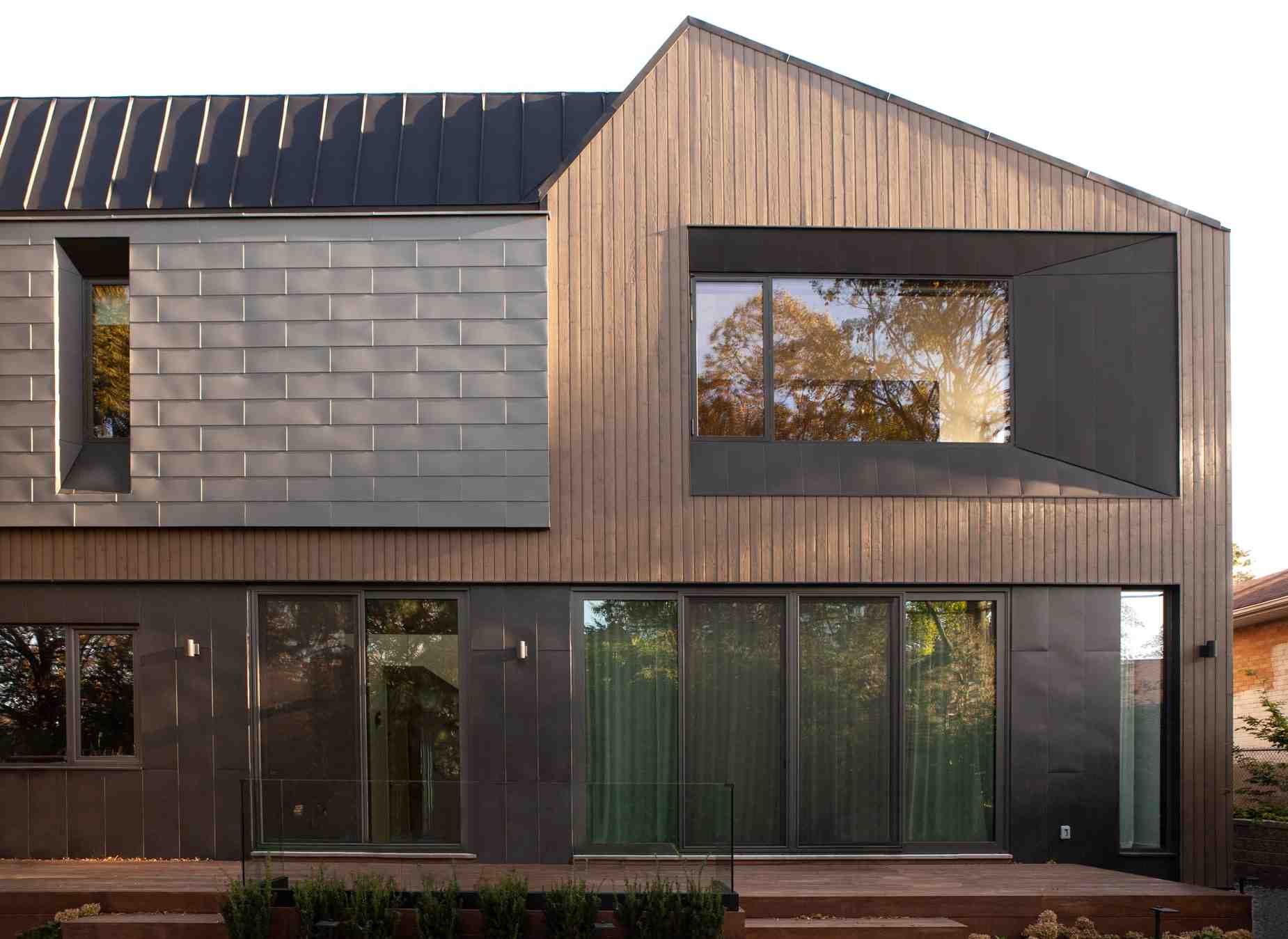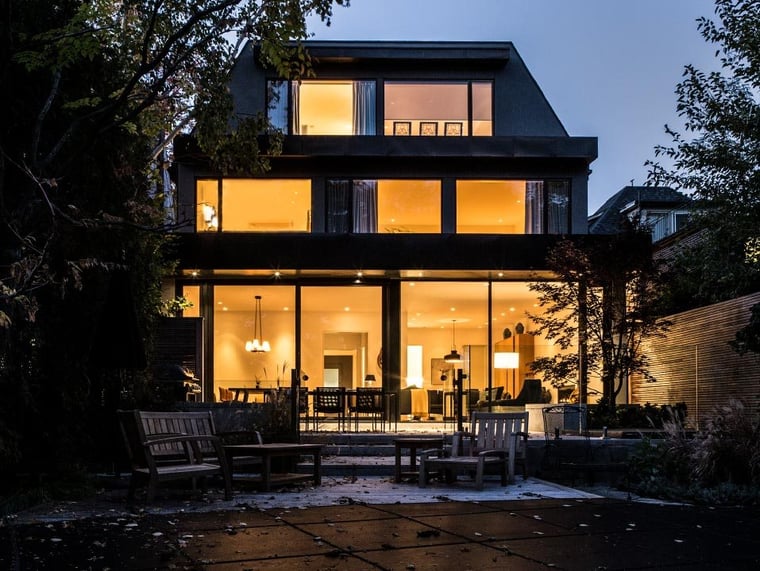
Building a Custom Home Process in Toronto
You’re finally ready to build a custom home. This exercise can be daunting but absolutely worthwhile because the home that you build will be yours and yours alone. It will be designed and constructed to your personal tastes and preferences from beneath the basement to the top of the roof. It will look and function exactly as you want it to, and there will be no shortcomings or “I wish we had done….” If you follow the necessary steps from beginning to end.
In real estate, it’s all about location, location, location. Custom home construction, it’s all about planning, planning, planning. In our nearly 20 years as custom home builders, SevernWoods has honed our process. We can’t speak for other builders and their processes. Everyone’s steps to build a house are slightly different, but our insight into our own time-tested detailed planning process for building a custom home can help you know what to consider as you dream of your own custom home.

The Custom Home Building Process
The Building Lot
The first thing that one needs for the custom home building process is land or a lot for building. The lot you choose may be the address you have lived on for a long time, fresh, uncleared land, or you may be looking for or recently purchased a home with the intention of demolishing it and building a new home to replace it.
Your Architect
You may have all sorts of ideas and Pinterest clips of homes that catch your eye, but the next step is to hire the right architect to design your home. Architects come in all shapes and sizes, and finding the right fit for your needs is important. Some architects are full-service. They design the exterior and layout and also the detailed interior. Some even design the landscape. If your chosen architect does not design the details, you will also have to hire an interior designer and maybe a landscape architect to complete the vision. A full-service architecture firm may be the best way to proceed if you are looking for the simplicity of one-stop shopping for all of your design needs.
Your Custom Home Budget
You are likely initially unsure how much your custom home will cost to build, but you will probably have a desired investment for the project. Share this information with your architect. They will advise whether you are in the ballpark with your cost expectations and why. Architects don’t usually provide detailed estimates of construction costs for a custom home building project. This is where your Contractor comes in.
Choosing Your Custom Home Contractor
Just as you went through an investigative process to select your architect, now is the time to go through a similar process to select your home building contractor. We advise you to interview a handful of referred or found and obviously professional contractors and choose the one that you feel you can trust, whom you think will provide good value and information throughout the design and construction process, and who has a reputation for building quality homes similar in size and location to your custom home project.
While your chosen contractor will not be able to precisely estimate the cost of your project at this early stage, they should be engaged with a Pre-Construction Agreement. This puts your contractor on standby and available for discussion, construction expertise, budget development and value engineering throughout the design process. The benefits and value of this relationship from the onset of design are huge. A quick analysis of your wishes created during design development will allow your contractor to give you a reality check aligning on your desired investment and design at an early stage before much time and money is spent on the detailed design that you’ll have to change later.
-1.jpg?width=760&height=341&name=tom%20cumming%20and%20architect%20working%20together%20on%20blueprint%20for%20custom%20home%20(1)-1.jpg)
Pre-Construction
A good contractor will first build a very detailed budget template to outline the cost of every detail of your custom home. The first draft of this budget will be general because it is based on your contractor’s past experience with similar projects and not real numbers from real trades and suppliers. This first draft is another check to confirm that your investment expectations continue to align with your design.
Ongoing Design
After we have completed the design development, agreed upon the size and shape of the house, and approved the preliminary budget, the architect will proceed with more detailed plans and elevations to submit to the Toronto city zoning department to determine whether your plans can be built on your lot under the current zoning bylaws for that lot. Building a house in Toronto comes with more zoning regulations than many out-of-towners expect.
The response from zoning can take from 1 to 3 months. Design should continue during the wait time in the interest of moving the project forward. The report from zoning, whenever it arrives, will declare that the design is within the bylaws for the lot and that the custom home you designed can be built “as of right” or that the home is outside of one or many of the bylaws constraints. At this point, you and your team have a choice. You can change the design so that it fits the “as of right” criteria, or you can apply for a hearing at the Committee of Adjustment (C of A) to request the minor variations to the zoning bylaw that will allow what you have designed to be built on your lot. The time from application to C of A until a hearing date is scheduled can be from 4 to 8 months…a significant delay to the process.
Let’s assume that you and the team choose to apply to C of A. Your architect, and, if you have hired one, a private planner, will share their opinion on the likelihood of receiving approval at C of A based on past approvals in the neighbourhood and a number of other variables related to your plans. While they can’t guarantee approval at C of A, you and your team can assess the odds and determine whether to continue investing in design and engineering to move the project forward.
We, as your contractor, would suggest moving forward with design and engineering to address the variances from zoning regulations. We wouldn’t suggest applying to C of A with a design that is unlikely to receive approval.
Ongoing Pre-Construction Work Effort
Whether building as of right or applying to C of A, completing design and engineering allows your contractor to start the process of vetting skilled tradespeople for the first and subsequent phases of construction. Good trades for residential construction are always busy, and we want to get competitive bids from at least 3 companies for each trade required on the project. The important trades to lock in early are those that get the house to the point where it is closed in and weather-tight with a completed exterior envelope. Those are demolition and excavation, foundation-forming and concrete, slabs and drains, framing, windows, and roofing. These trades will require a deposit to lock our project into their schedule 3 to 4 months out. Windows can have lead times of 20 to 30 weeks, and we want to install them as soon as framing and roofing are complete.
At this point, your contractor will provide a Construction Agreement allowing trades and materials to be contracted and deposits paid. Now that the first key trades are committed, your contractor can develop a detailed project schedule that will accurately outline each activity from the start of existing home demolition to the completion of construction so that you now have a realistic idea of when you’re moving into your new custom home.
Building Permit
A building permit has to be issued before any demolition or construction can start. If the C of A approval is required, The Architect can apply for your building permit approximately 1 month after approval at C of A. If you are building as of right, the Permit can be applied for when all of the design documents and engineering are finalized. Depending on the size and complexity of your custom home design, it usually takes from 1 to 2 months from the date of application for the permit to be issued.
Trade schedules can’t be confirmed until permits are in hand. When the construction activity is busy as it has been for the past several years, expect the start of construction to be scheduled for a minimum of 1 to 3 months after the building permit has been issued.
Construction and Interior Drawings
Throughout the application periods and waiting times, detailed construction drawings and specifications with wall sections and construction details should be in progress. Interior design, selections and drawings should also be completed during this time period. As these important construction documents become available to the contractor, all trades and suppliers can now be tendered to, the detailed budget becomes increasingly accurate. As part of the project team from the beginning, the contractor will involve their friendly and experienced trades to share their expertise to improve on certain design elements and details and value engineer input to reduce costs. Good trades are specialists, and they have a great deal of up-to-date knowledge about their areas of expertise. Involving some of them early in the process can introduce ideas and concepts to improve some aspects of the home that the other team members may have missed. The collaborative work effort of owners, architects, designers, contractors, and trades results in the best overall design and implementation for a custom home.

The Custom Home Build
It’s time to start building. Now that permits have been issued, Insurance paid, and the project registered with Tarion and the Ministry of Labour, work begins on constructing the custom home.
Move-in Time
At the completion of Construction, your home will be professionally cleaned and prepared to allow you to move in, fill your drawers and cupboards and eat dinner.

How Long Does it Take to Build a Custom Home in Toronto?
A custom home in Toronto will take from 12 months to 24 months to build, depending on the size and intricacy of your design. You will know much more about your schedule and new home construction timeline before you begin. You will know the exact completion date and the date that your home will be ready for you to move 3 to 6 months prior to completion.
It is your contractor’s responsibility to manage all aspects of the construction project, schedule, and budget at all times. Your professional contractor will utilize a construction management system allowing for real-time information sharing, scheduling meetings, reviewing and approving any changes or requests and keeping the entire team apprised of progress and problems. There are always changes requested or required during construction. By identifying how each change will affect both the budget and schedule, all parties remain up to date, and there are no surprises.
When you’re ready to talk to the ultimate custom home experts, connect with us to tell us about your Toronto custom home project.


